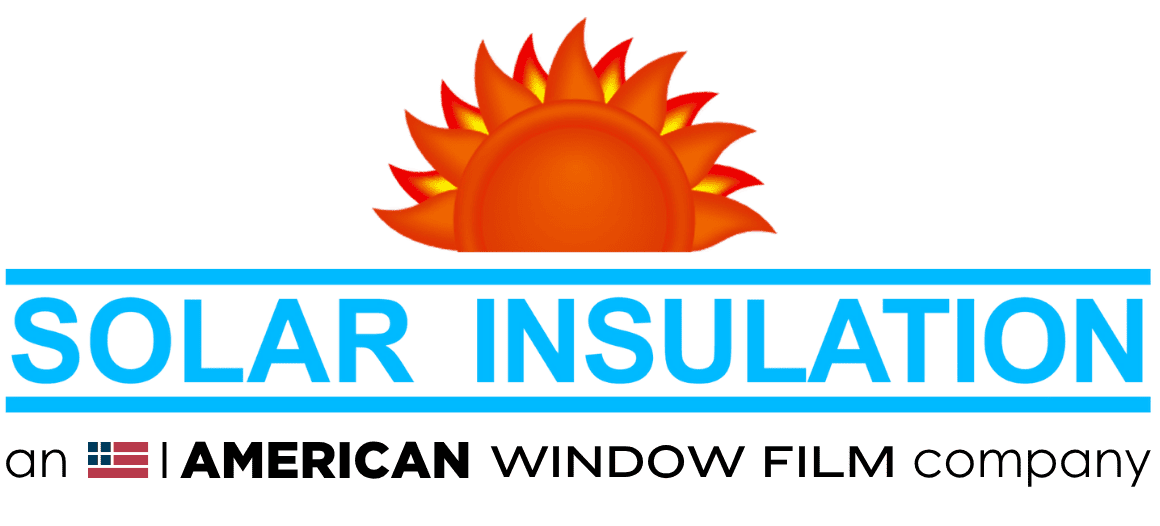SOLAR INSULATION PRODUCTS
Solar Insulation Window Films uses the highest quality materials combined with excellent workmanship, written manufacturer warranties and clean-cut, honest employees. To sum it up, we offer the best products installed by the best installation crew.
Solar Control and Fade Reduction
Solar control films block 99.9% UV radiation and up to 78% solar energy (heat) along with glare reduction up to over 88%. Customers who use our products can reduce the rate of fading and dry rot of their interior furnishings, in addition to calming bright glare and cooling down solar heat gain. In the last few years window films using ceramics, semi-metallic oxides and micro layering designs have been added to the long- established film constructions which use metals and metal alloys along with sophisticated dyes and pigments. Solar Insulation, with over 35 years of hands-on-experience in this field, believes all of these film constructions have their particular advantages and reminds customers and prospective customers that the major manufacturers offer duration-of-home-ownership residential warranties and 10-15 year commercial warranties on films including all of these construction types. Solar Insulation is aware of some competitive sales pitches from both local dealers and national manufacturers that seek to destroy buyer confidence in tried and true film constructions that have long successful track records going back as far as 40 years. Solar Insulation makes it our business to keep up with the state-of-the-art in new film constructions as well as established film constructions so that you can contract in confidence with a company that believes in servicing its customers’ best interests.
Optical Films
3M Prestige films are the state-of-the-art in very pale high performance window films. These “optical” films use micro-layering techniques to redirect solar energy away from the interior of your home with minimal loss of visible light and no more reflectance than ordinary glass already reflects. These films are especially suited to residential applications and to retail storefronts. They are virtually unnoticeable from the outside or inside and stop 99.9% of Ultraviolet wavelengths while still providing impressive amounts of solar heat gain.
Ceramic and Nanoceramic Films
Ceramic makes us think of coffee cups, but the term “ceramic” actually covers a large category of material science. For window films the introduction of ceramic films helped avoid having to use somewhat “shiny” metallic films to get serious heat reduction for homes. Despite the fact that many metal films are no “shiner” than the shine off of the unfilmed insulating (double) glass that most of us have in our homes now, the fear of shiny proved a fertile selling tactic to homeowners and has probably helped expand the residential market dramatically. As you might expect, ceramic films typically cost more than alloy films with similar performance.
Metal and Metal Alloy films
Clear polyester film coated with aluminum to a density of 20% visible light transmission (think reflective sunglasses) is the original core product of the window film business, dating back to 1966. It is still widely used today primarily on office buildings because it has the best performance for price available and is one of the few films appropriate and efficient to add to glass which is already colored from the factory. Nickel chrome, stainless steel, stainless/copper alloy, titanium and many other metal alloys have been successfully used on window film. They give different degrees of reflectivity and appearance and different colors of light filtration. When dyed or pigmented layers are added even more variety in appearance results. These groups of films have been the core of the commercial and residential window film business for over 40 years.
Dyed and Pigmented Films
These films are found mostly in the automotive world. The challenge for dyed and pigmented films is durability. Such films can be made unbelievably cheaply and the sun will destroy them quickly. If, however, they are constructed of top quality materials and UV inhibitors are used in every layer, they can last for many years. Many higher-quality films (both auto and commercial/residential) use a combination of color and metal and their manufacturers cover them with excellent long-term warranties. Solar Insulation sells and installs such higher quality films and ALL of our automotive installations are guaranteed for as long as you own your car. We have been giving this guarantee since we started filming auto windows in 1975.
Decorative Films
These films come in a wide variety of densities and patterns and are mostly translucent –that is, they pass some light but not clear images. Some are made of polyester and most are made of vinyl. The most popular of these is generally know as “frost” and its appearance is virtually identical to glass which has been sand blasted or acid etched. It can be cut like vinyl into custom art designs and logos and is very durable and easier to keep clean than etched or sand blasted glass (and easier and much less costly to change if tenants or tastes or logos change!)
Safety and Security Films
These are thicker, stickier films used to protect humans from broken and flying glass and to slow down “smash and grab” criminals enough to discourage or catch them. The majority of these films are clear (and virtually undetectable) but they are also constructed with solar control coatings so it is possible to get double duty (security and solar control) from a single application. These films can be installed and attached to the window frames for maximum protection, especially from explosions and storms. But a “daylight” application (just covering the glass) is the norm and still affords amazing protection.
Military and other Government buildings have made exstensive use of these films, especially after 9/11.
Anti-graffiti film
These films are clear and designed to be easily removed and replaced. Vandals who “tag” mirrors and storefront glass with paint or glass scratching tools don’t know that it is film, which can quickly be replaced for a fraction of the cost of new glass. Public transportation vehicles as well as storefront and mirror glass are the major beneficiaries of these films.



